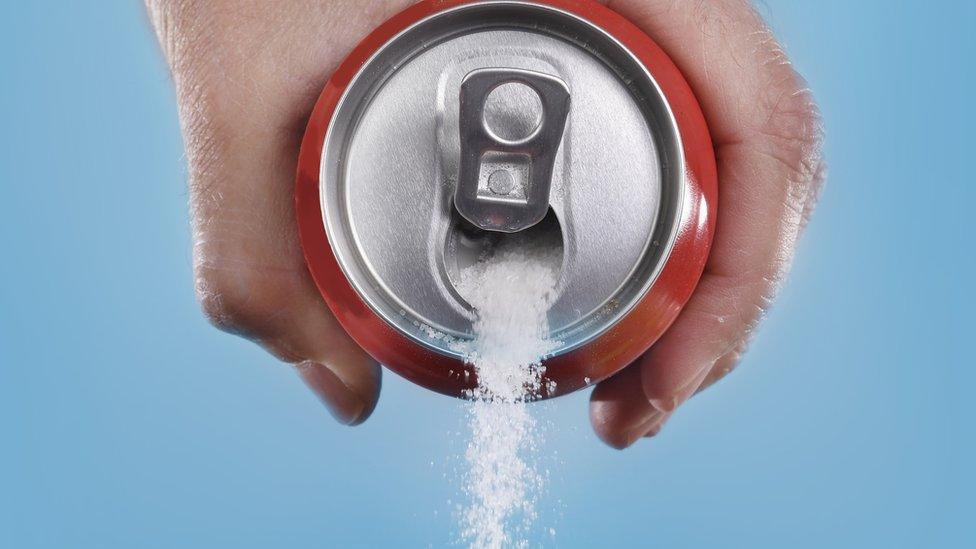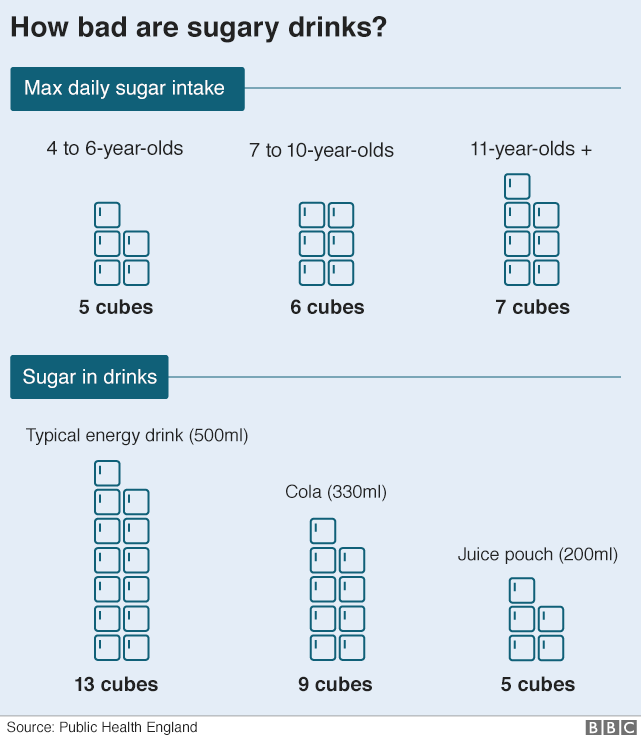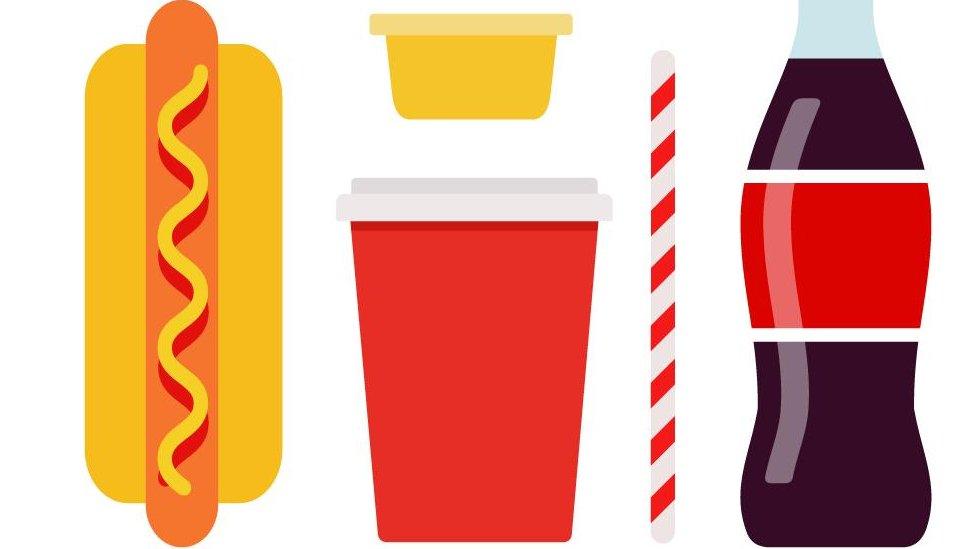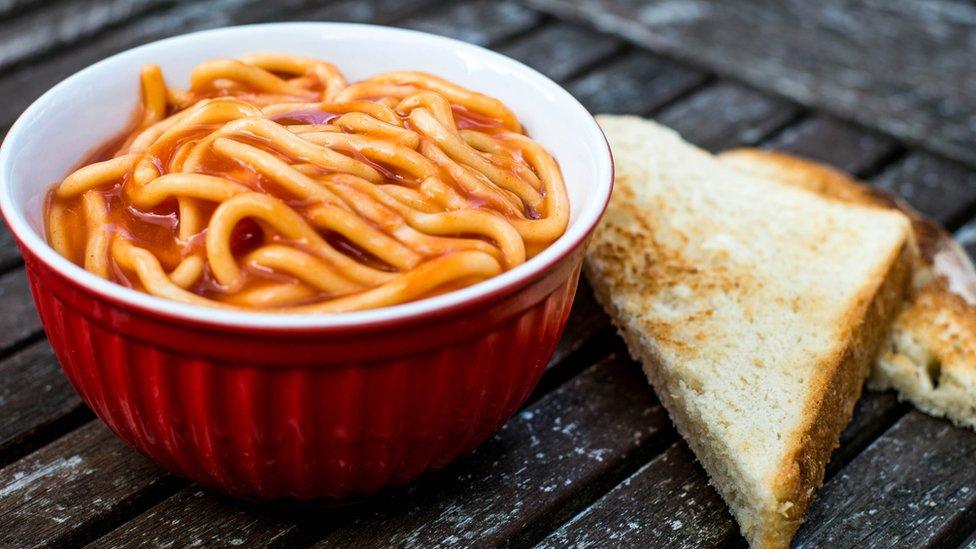How diet is changing - the good and the bad
- Published
- comments

Children are turning their backs on sugary drinks, with the numbers drinking them falling by a third over the past nine years, a survey suggests.
About half of children do not drink them - and those that do are drinking fewer than children in 2008-09 did.
The shift has contributed to an overall reduction in sugar consumption.
However, all age groups still consumed above the recommended levels, according to the nine-year analysis of the UK National Diet and Nutrition Survey, external.
But on other measures, diet has not improved, the report, from the Food Standards Agency and Public Health England, said.
Fruit and vegetable consumption remains largely unchanged and is still under the recommended five-a-day level.

Fibre intake has fallen slightly, while vitamin and mineral consumption is down.
And there has been little change in oily fish intake.
Emer Delaney, of the British Dietetic Association, said she was pleased with the progress that has been made.
She said the reduction in sugary drinks consumption was "important", adding: "It shows change can be made - and it is happening slowly, but surely."
But she conceded more needed to be done to get people to increase fruit and vegetable consumption.
"Frozen and tinned fruit and vegetables are just as good - we need to encourage people to use them as well as fresh products."
Is this the death of fizzy drinks?
There is a long way to go yet. The first thing to note is the definition of being a "consumer" used by the survey team.
They asked people to keep diaries over four days and those who did not have a sugary drink over that time period were classed as a non-consumer.
On that basis, half of children were classed as having them in the latest survey.
Nonetheless, the drop in consumption levels is welcome news for health experts who have spent the past decade warning about the dangers of them.
The tax on sugary drinks was introduced in 2018 - after this survey was carried out - but the change in the law was preceded by a number of years of debate about the sugar content of these drinks.
A typical can of cola is enough to breach the recommended daily sugar intake for children in one go.


The warnings appear to have had an impact. Around three-quarters of children were consumers of sugary drinks at the start of the period.
But despite this progress, sugar consumption is still too high.
Official health advice recommends that no more than 5% of calories should come from sugar, but children are getting more than twice this amount.
What about fruit and vegetables?
The five-a-day message has been around for a long-time - the government campaign was launched in 2003.
But it seems to be having little impact.
Over the nine years there has been hardly any change in the amount people consume.
Adults under 65 are eating around four portions a day on average. Older adults and children even less.
The five-a-day campaign is based on advice from the World Health Organization, which recommends eating a minimum of 400g of fruit and vegetables a day to lower the risk of serious health problems, such as heart disease, stroke and some types of cancer.
Five-a-day was chosen because it was viewed as realistic. Research has suggested that to get maximum benefit people should be eating twice that amount.
Apples and pears, citrus fruits, salads and green leafy vegetables and vegetables, such as broccoli, cabbage and cauliflower were found to be best.
- Published17 August 2018

- Published3 January 2018

- Published17 January 2018

- Published6 June 2018
